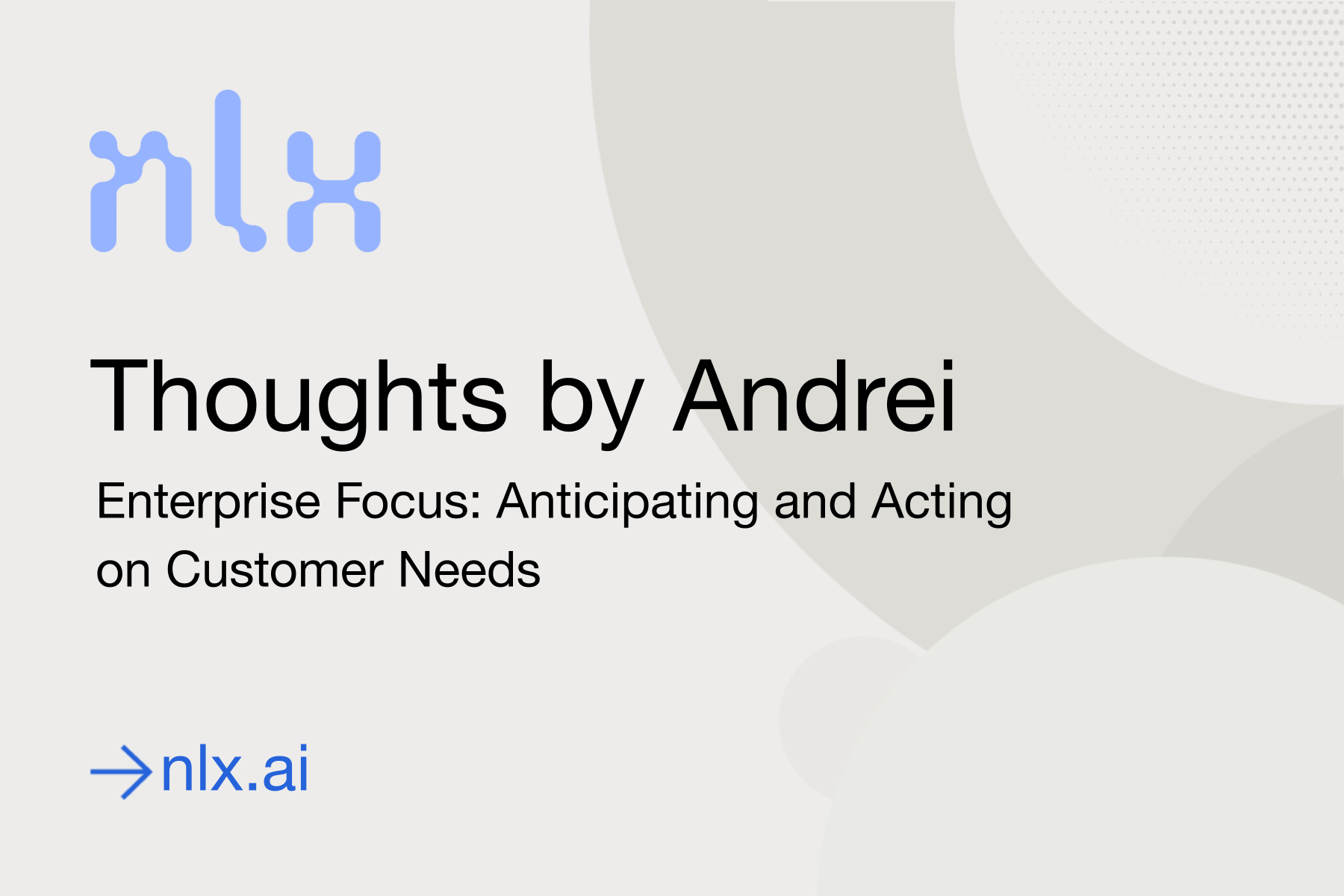This Thoughts by Andrei is penned by Derrick Bradley, NLX's Chief Growth Officer. Learn more about Derrick here.
It’s rarely the case for enterprises that customer data is easy to access, derive insight from, and act on in a short period of time. It’s pretty standard to have multiple teams and sets of stakeholders involved in answering questions like: “What drove the increase in volume to our call center last quarter? Why did our automaton rates drop last month? Where can we improve self service the most?” NLX is making it easy to answer these types of questions with a new set of powerful AI capabilities that we are busy incorporating into our platform.
We believe that enterprise customers who can quickly anticipate and act rapidly on emerging customer needs will develop a major competitive advantage in their respective industry. In an upcoming release, we will be offering enterprise organizations the ability to identify customer patterns and trends that may not be immediately apparent to them, in real-time.
This works by embedding our technology at the trunk of a smart IVR (voice) or a customer-initiated chat session so that we can capture and analyze a customer’s initial utterance and apply our zero-shot learning AI model to them to derive insights about your customers’ needs. The goal is to identify meaningful patterns and relationships with your customer data much like a librarian groups similar books together based on their characteristics, such as subject matter, author, or publication date to make them easy to locate.
